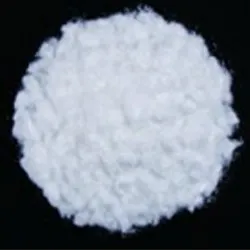
Understanding the Properties and Applications of Styrene Butadiene Rubber in Industry
Styrene-Butadiene Rubber (SBR) Properties, Applications, and Future Trends
Styrene-butadiene rubber (SBR) is a synthetic rubber that is widely utilized in various applications due to its excellent properties and adaptability. First developed in the 1930s, SBR has become one of the most important materials in the rubber industry. This article explores the characteristics, applications, and future trends related to SBR.
Properties of Styrene-Butadiene Rubber
SBR is a copolymer made from styrene and butadiene, which gives it a unique combination of properties. The styrene content contributes to its strength and thermal stability, while the butadiene component provides excellent resilience and flexibility. The typical composition of SBR varies, with common formulations containing approximately 75% butadiene and 25% styrene.
One of the main advantages of SBR is its good abrasion resistance, making it ideal for high-wear applications. It also has excellent aging stability, which allows products made from SBR to maintain their properties over time. Additionally, SBR exhibits moderate resistance to chemicals and weathering, although it can be less effective than natural rubber in some harsh environments.
SBR can be produced using different polymerization methods, including emulsion polymerization and solution polymerization. The emulsion process leads to a product with better heat resistance and lower rolling resistance, while the solution process allows for enhanced consistency and control over the molecular weight distribution.
Applications of SBR
The versatility of SBR lends itself to a multitude of applications. The tire industry is the largest consumer of SBR, where it is used in the manufacture of tire treads and sidewalls. SBR helps improve traction and durability, crucial features for driving safety.
sbr styrene butadiene rubber

In addition to tires, SBR is extensively used in the production of various rubber goods, including conveyor belts, hoses, gaskets, seals, and footwear. Its excellent balance of cost-effectiveness and performance makes it a preferred choice for many manufacturers. Moreover, SBR is utilized in the automotive industry for parts such as vibration dampers and weatherstripping.
The growing construction industry has also seen a rise in the use of SBR in products like adhesives and sealants. These applications benefit from SBR's resilience and adherence to different substrates. Additionally, SBR is increasingly used in the development of rubberized asphalt, which enhances road durability.
Future Trends in SBR Production
As we move towards a more sustainable future, the rubber industry, including SBR production, faces various challenges and opportunities. The demand for environmentally friendly materials is on the rise, prompting manufacturers to explore bio-based and recycled materials in rubber production. Innovations in polymer technology may lead to enhanced properties and formulations, allowing SBR to meet the evolving needs of industries while reducing its environmental footprint.
Furthermore, with advancements in manufacturing processes, such as 3D printing and automated polymerization methods, the SBR industry is likely to experience increased efficiency and customization. These innovations can lead to the development of specialized SBR grades tailored for specific applications, enhancing performance in niche markets.
Additionally, regulatory pressures regarding the sustainability of raw materials and the reduction of greenhouse gas emissions are influencing the SBR market. Manufacturers are investing in research and development to produce SBR with a lower environmental impact, potentially utilizing renewable resources and minimizing waste during production.
Conclusion
Styrene-butadiene rubber has established its significance in various sectors, particularly in tire manufacturing and other rubber products. Its favorable properties make it an invaluable material in the rubber industry. As trends point towards sustainability and innovation, the future of SBR is set to embrace new methodologies and formulations, ultimately paving the way for a more environmentally conscious and efficient rubber industry. Through ongoing research and development, SBR is poised to continue playing a vital role in a wide array of applications critical to modern life.
-
Pure Sodium Dichloroisocyanurate Dihydrate | Powerful DisinfectantNewsAug.29,2025
-
Industrial Chemicals: Quality & Purity for Every IndustryNewsAug.28,2025
-
Nitrile Rubber Honoring Strict Production StandardsNewsAug.22,2025
-
Aspartame Ingredients Honoring Food Safety ValuesNewsAug.22,2025
-
Fertilizer for Balanced Plant NutritionNewsAug.22,2025
-
Cyanide Gold Processing with High Purity AdditivesNewsAug.22,2025
-
Formic Acid in Textile Dyeing ApplicationsNewsAug.22,2025
Hebei Tenger Chemical Technology Co., Ltd. focuses on the chemical industry and is committed to the export service of chemical raw materials.
-

view more DiethanolisopropanolamineIn the ever-growing field of chemical solutions, diethanolisopropanolamine (DEIPA) stands out as a versatile and important compound. Due to its unique chemical structure and properties, DEIPA is of interest to various industries including construction, personal care, and agriculture. -

view more TriisopropanolamineTriisopropanolamine (TIPA) alkanol amine substance, is a kind of alcohol amine compound with amino and alcohol hydroxyl, and because of its molecules contains both amino and hydroxyl. -

view more Tetramethyl Thiuram DisulfideTetramethyl thiuram disulfide, also known as TMTD, is a white to light-yellow powder with a distinct sulfur-like odor. It is soluble in organic solvents such as benzene, acetone, and ethyl acetate, making it highly versatile for use in different formulations. TMTD is known for its excellent vulcanization acceleration properties, which makes it a key ingredient in the production of rubber products. Additionally, it acts as an effective fungicide and bactericide, making it valuable in agricultural applications. Its high purity and stability ensure consistent performance, making it a preferred choice for manufacturers across various industries.





